
[caption id="ADayToVisitMonmouth_Feature" align="aligncenter" width="1024"]
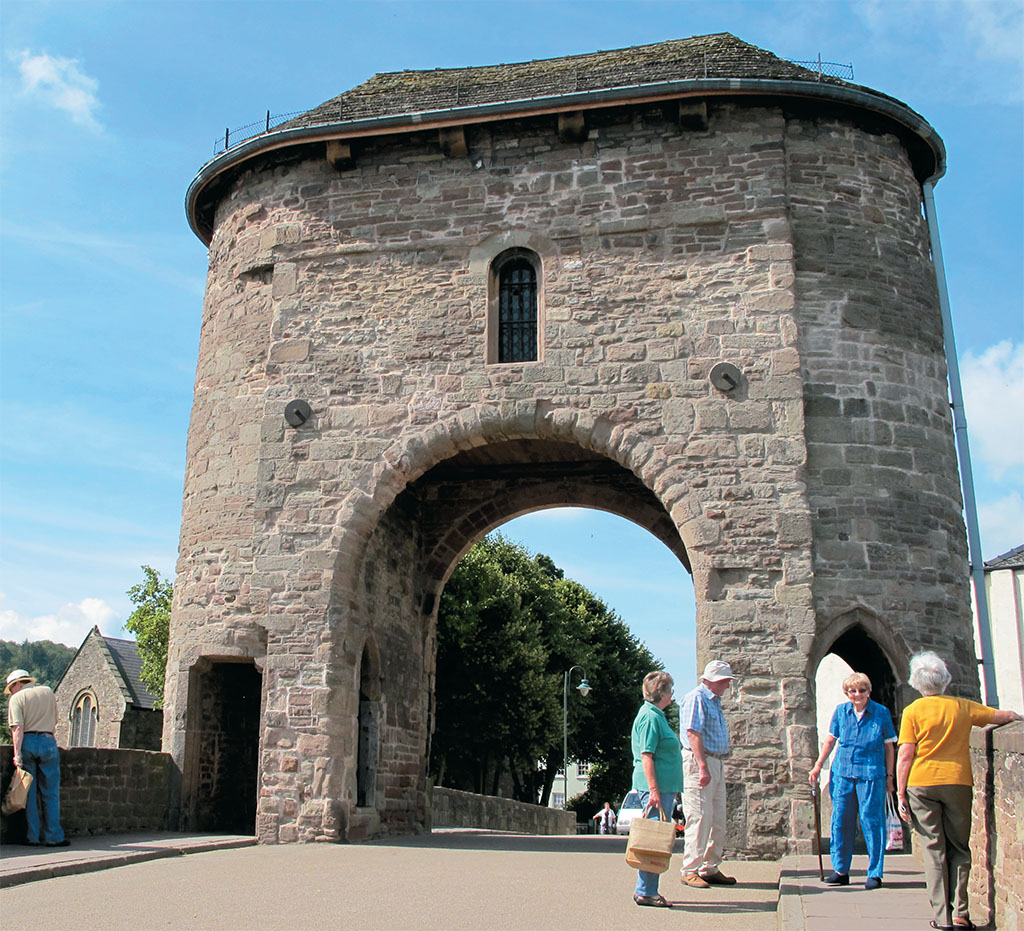
SIÂN ELLIS
WHY GO TO MONMOUTH
The Romans set one of their earliest forts in Wales here, in the 1st century AD, and later founded Blestium. It’s a great strategic and scenic site on the confluence of the rivers Wye and Monnow (from which Monmouth derives its name, in Welsh Trefynwy); Offa’s Dyke Saxon boundary snakes through and the seductive Wye Valley and Forest of Dean recline around the fringes. It’s an easy visit from Bristol, Bath, Hereford or Cheltenham, or Cardiff if you’re already in south Wales.
This important border post has seen its fair share of upheaval and the town is best known as the birthplace of the warrior king Henry V (“Henry of Agincourt”). You’ll also discover quirky surprises around its Tudor, Georgian and Victorian nooks, turning up Nelson, Rolls of Rolls-Royce renown and a rebellion that shook the Victorian establishment.
Gently paced and eminently browsable, Monmouth mixes well to-do county town indulgence with the workaday. It may be pocket-sized (population circa 10,000) but its historical record merits the first Wiki-project to cover a whole town: Monmouthpedia, www.en.wikipedia.org/wiki/Wikipedia:GLAM/MonmouthpediA. For visitor information see www.welcometomonmouth.co.uk and www.monmouth.org.uk.
HOW TO GET TO MONMOUTH
By road from London take the M4/M48 and A466 (via the Wye Valley), or simply follow the A40 (passing Oxford, Cheltenham and Gloucester). Journey time is around three hours/three-and-a-half hours via the A40. Trains, once or twice an hour from London Paddington to Chepstow, arrive in less than two hours 40 minutes, then taxi from Chepstow to Monmouth is 17 miles. www.nationalrail.co.uk
WHERE TO STAY OVERNIGHT
Everything is walkable. The 16th-century Coach House on St. John’s Street provides four-star B&B; there’s the restaurant and a pretty courtyard downstairs for lunch or an evening meal. www.thecoachhousemonmouth.co.uk Bistro Prego at 7 Church Street is a centrally located three-star restaurant with rooms. There are several pub options, plus farmhouse B&Bs out of town.
[caption id="ADayToVisitMonmouth_img1" align="aligncenter" width="1024"]
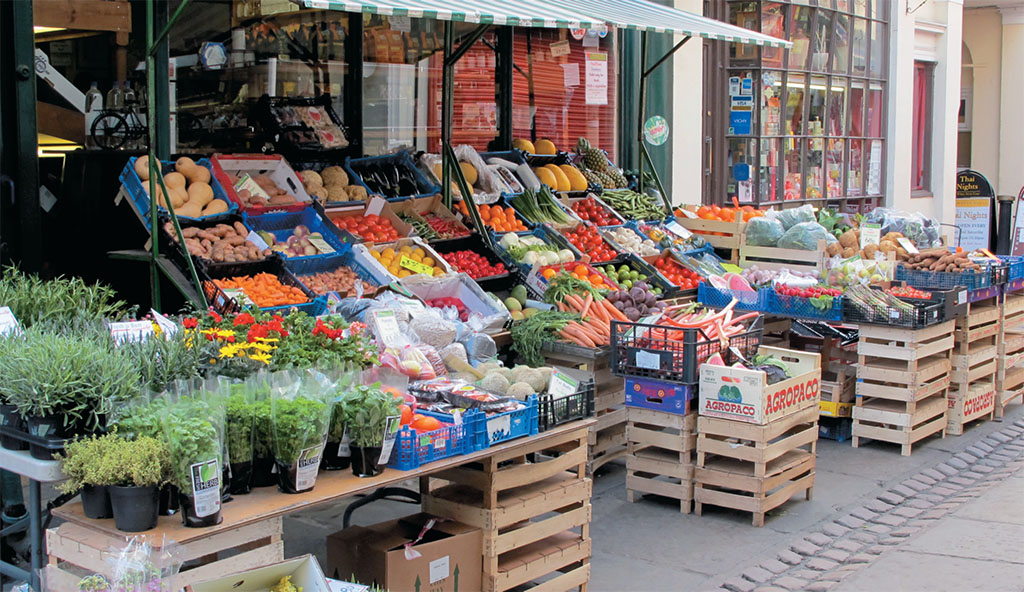
SIÂN ELLIS
HOW TO SPEND A DAY IN MONMOUTH
Agincourt Square at the top of town, surrounded by shops, pubs and passing traffic, is a focal point. A strangely stooped statue of Henry V does no favors to the hero who saw off the French with his longbowmen at Agincourt in 1415; equally whimsical is the statue of another local hero, the Hon. Charles Rolls, holding a model of the bi-plane in which he made the first nonstop flight to France and back.
[caption id="ADayToVisitMonmouth_img2" align="aligncenter" width="1024"]
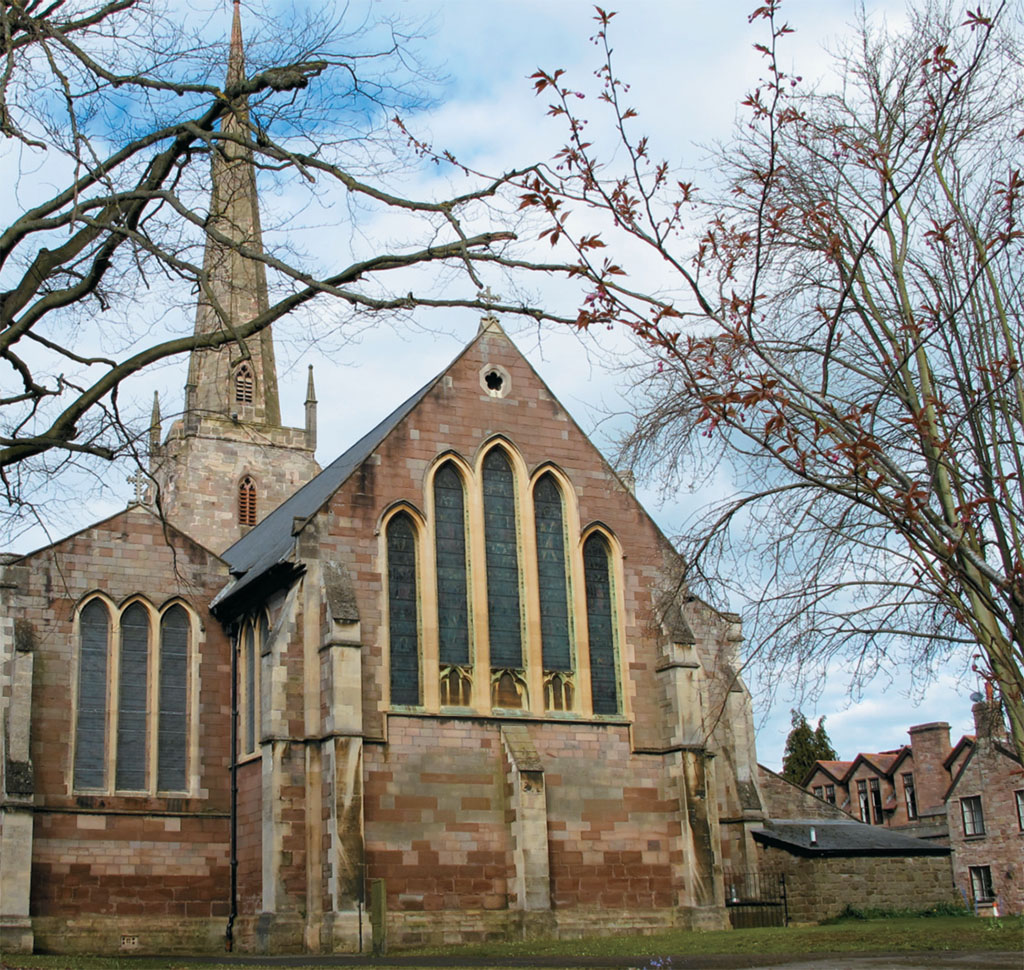
SIÂN ELLIS
[caption id="ADayToVisitMonmouth_img3" align="aligncenter" width="292"]
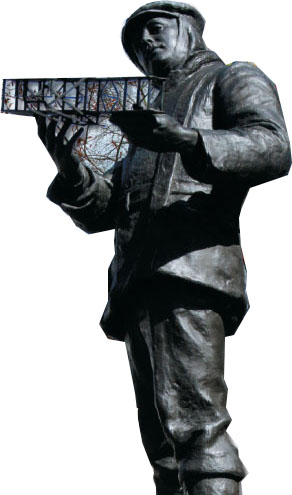
SIÂN ELLIS
Tour the impressive Shire Hall (1724) with its historic courtroom, and do pick up an audio-video handset (£2) that brings to life the Chartist Trials here in 1840. When less than one in eight men could vote, the Chartists campaigned for a more equitable system. The violent Newport Uprising (November 1839), however, shocked the nation and led to the last mass treason trial in Great Britain. You can sit in the dock or on the judge’s bench where events played out in the courtroom. Following public outcry the Chartist leaders’ sentences were commuted from hanging to transportation for life.
The Shire Hall also houses the Tourist Information Centre. Booklets on Monmouth Heritage Blue Plaque Trail (£2) provide an engaging walkabout that gets you under the historic skin of country market town life. Monnow Street is the main thoroughfare and at the bottom is Monnow Bridge (circa 1270) straddled by its gatehouse—betimes a tollhouse, guardroom, gaol or dwelling: the only such medieval survivor in the land. St. Thomas’s Church and St. Mary’s Priory Church are originally Norman (though much altered), while quaint old Monmouth Priory is traditionally linked to Geoffrey of Monmouth, the 11th-century chronicler who stoked Arthurian legend.
The Nelson Museum and Local History Centre (free entry) is an eccentric surprise. The hero of Trafalgar cruised into town on the popular Wye Tour in 1802, tarrying to be feasted and feted by adoring crowds. A little later Lady Llangattock, local gentlewoman, became a premier collector of “Nelsoniana”: everything from Nelson’s prayer book to poignant letters as he fell for Emma Hamilton. Lady Llangattock’s son, pioneering aviator and motorist Charles Rolls, is also commemorated in evocative photos and artifacts, notably 1910 newspaper reports of his fatal crash, “The first English victim of aviation.”
In the afternoon, squeeze along the unprepossessing lane to Castle Hill and the ruins of Monmouth Castle, where Henry V was born in 1387. Information boards tell the story of the site’s origins as a Norman fort, and of battle-brave “Harry of Monmouth.” Neighboring Great Castle House (1673) is the headquarters of the Royal Monmouthshire Royal Engineers, which has the distinction of being the senior regiment of the Reserve Army and one of the oldest regiments in the country. The small museum (open afternoons with free entry) is stuffed with uniforms, photos, models, medals and weaponry.
Then saunter the riverside, or drive up to the Naval Temple and Round House (National Trust) at The Kymin: the first, a Georgian celebration of British Navy glories; the second, a banqueting den for Georgian gentlemen. The views down to town and the countryside around are gorgeous.
WHERE TO LUNCH OR DINE
There are pubs aplenty for traditional grub, like the Punch House on Agincourt Square, www.sabrain.com/punchhouse, riverside Gate House at Monnow Bridge, www.the-gate-house.com, or the ancient Robin Hood, 124 Monnow Street. For a flavor of more recently arrived trends, sit down in Bistro Prego, where braised goose leg and dessert of wafer-thin-sliced pineapple carpaccio with pomegranate, mint and fior di latte ice cream are typical offerings, www.pregomonmouth.co.uk.
WHERE TO STOP FOR AFTERNOON TEA OR COFFEE
Treat yourself to waitress-served scones with clotted cream beneath chandeliers at The Tea Room at La Piazza, 76 Monnow Street, www.lapiazza-monmouth.co.uk. In secluded Beaufort Court, Henry’s Café, and the Pocket Bakery and Café serving homemade cakes go down well, www.thepocketbakery.co.uk. Numerous cafés also spring along Monnow Street and higgledy-piggledy, pedestrianized Church Street.
WHERE TO SHOP IN MONMOUTH
The town still has the “real stuff”—weekend markets, butchers, bakers and traditional greengrocer Munday and Jones on Church Street. Fingal-Rock wine shippers and merchants, 64 Monnow Street, is good for local cider and honey, www.pinotnoir.co.uk, while independent bookshops include The Monmouth Bookshop, 13 Monnow Street, where you’ll find volumes of local interest. Gift shops and galleries keep appearing—maybe choose something by a British designer-maker in New Leaf Gallery, 19 Church Street, www.newleafgallery.co.uk, or indulge in some sticky nostalgia next door at Granny Brown’s Chocolate Box.
[caption id="ADayToVisitMonmouth_img4" align="aligncenter" width="1024"]
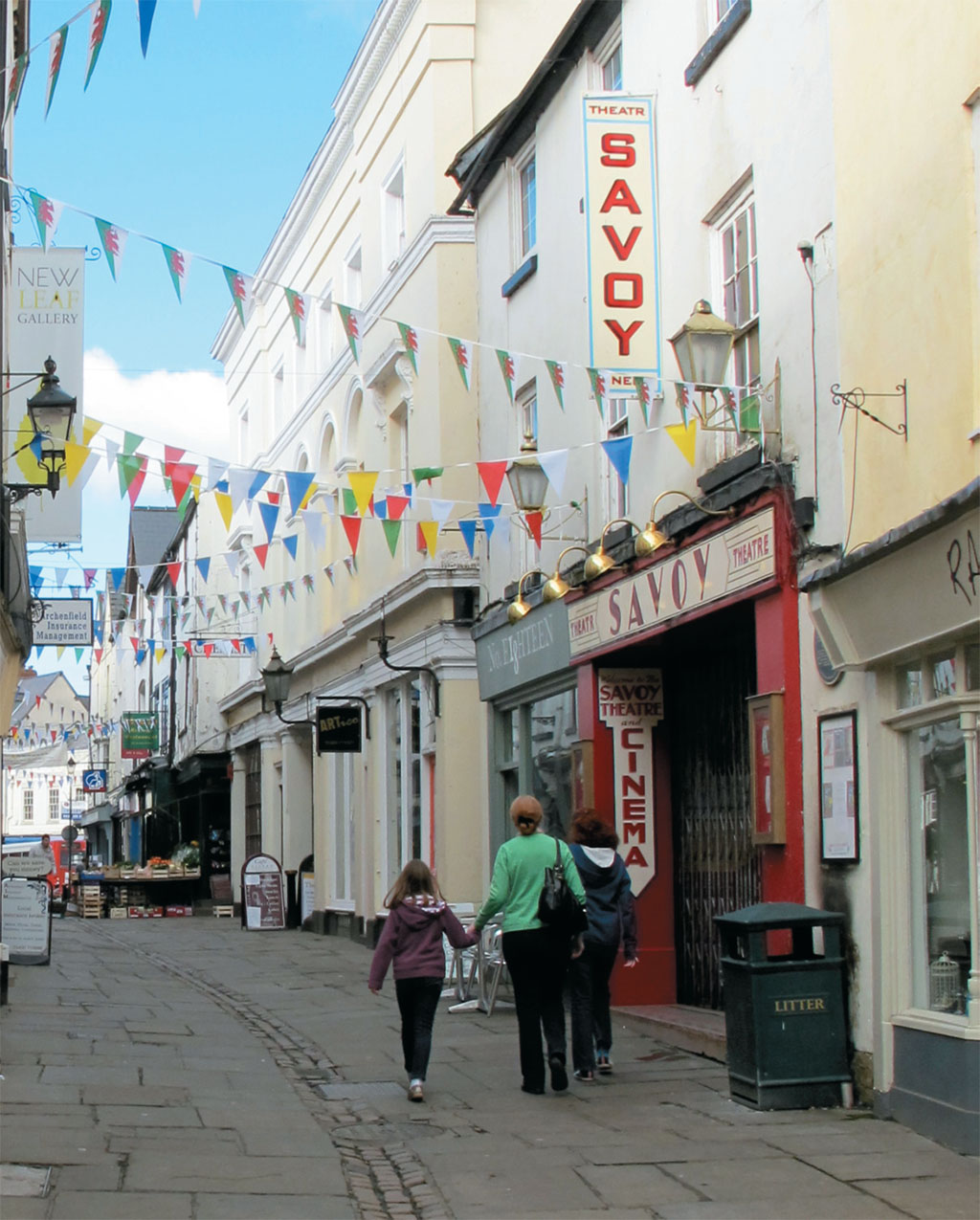
SIÂN ELLIS
HOW TO SPEND THE EVENING
Experience the delightful Savoy Theatre, Church Street, www.monmouth-savoy.co.uk. The theater site dates back to Elizabethan times and the current building rose in 1832. Although small, it goes the whole grandiose hog inside with red velvet, crystal chandeliers and (slightly flaking) gilded plasterwork. Regular performances range from touring national stars to more modest local productions. Sup your wine as you watch—very civilized.
WHAT IS SOMETHING YOU MAY NOT KNOW ABOUT MONMOUTH
“…the Welshmen did good service…wearing leeks in their Monmouth caps,” quoth Fluellen in Shakespeare’s King Henry V. There was once a thriving industry in Monmouth knitting caps widely worn by soldiers and sailors. Local Ryeland sheep provided quality wool and river transport enabled extensive distribution. See a 16th-century example of the distinctive round headgear in The Nelson Museum and Local History Centre.





Comments